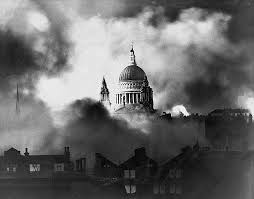I recently ran across a news item that on December 29, 1940, the German Luftwaffe bombed London on the 114th straight night of “The Blitz” during World War II. The results were devastating, setting off what some called the “Second Great London Fire” (the first being in 1666). Almost a third of the city was destroyed, including 19 churches.
One might think that, as military operations, these raids were straightforward. Actually, they were carefully planned. London’s main water source is the Thames River, which bisects the city. Since the Thames is a tidal river, the Germans planned these raids to strike at low tide when the water supply was less. The bombers would come in waves. The first wave would drop incendiary bombs to start fires. After a suitable interval, another wave would come over to drop high-explosive bombs, hoping to kill the firefighters and other first-responders.
The spiritual symbol of London was St. Paul’s Cathedral and special efforts were made to keep it safe. Volunteers mounted a nightly fire watch and although the cathedral was hit, damage was minimal. But there was one close call — a time-delay bomb was successfully defused. If it had exploded, the cathedral probably would’ve been destroyed.
This photograph by Herbert Mason of the Daily Mail newspaper (from Google Images) became a symbol of London’s resistance to The Blitz.
A good account of The Blitz is at http://www.bbc.co.uk/history/events/the_blitz?. There’s an excellent history of St. Paul’s Cathedral at https://en.wikipedia.org/wiki/St_P aul’s_Cathedral.
aul’s_Cathedral.
